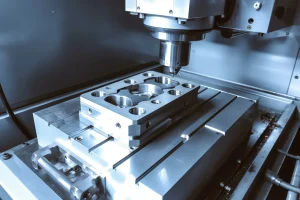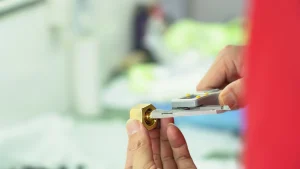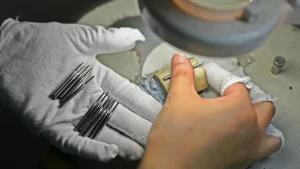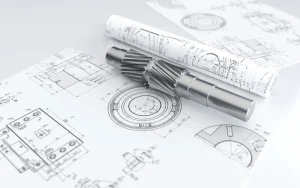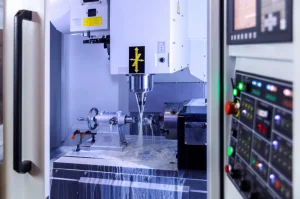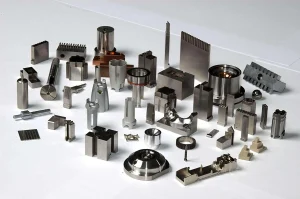When solar panels shine in the sun, when electric vehicles glide silently through the streets, and when giant wind turbine blades spin gracefully in the wind, few would have thought that behind these magnificent devices driving the energy revolution lies a sophisticated and powerful manufacturing force
–
CNC machining. In the grand picture of the rapid development of the new energy industry, CNC technology is playing an indispensable role as a precision backbone.
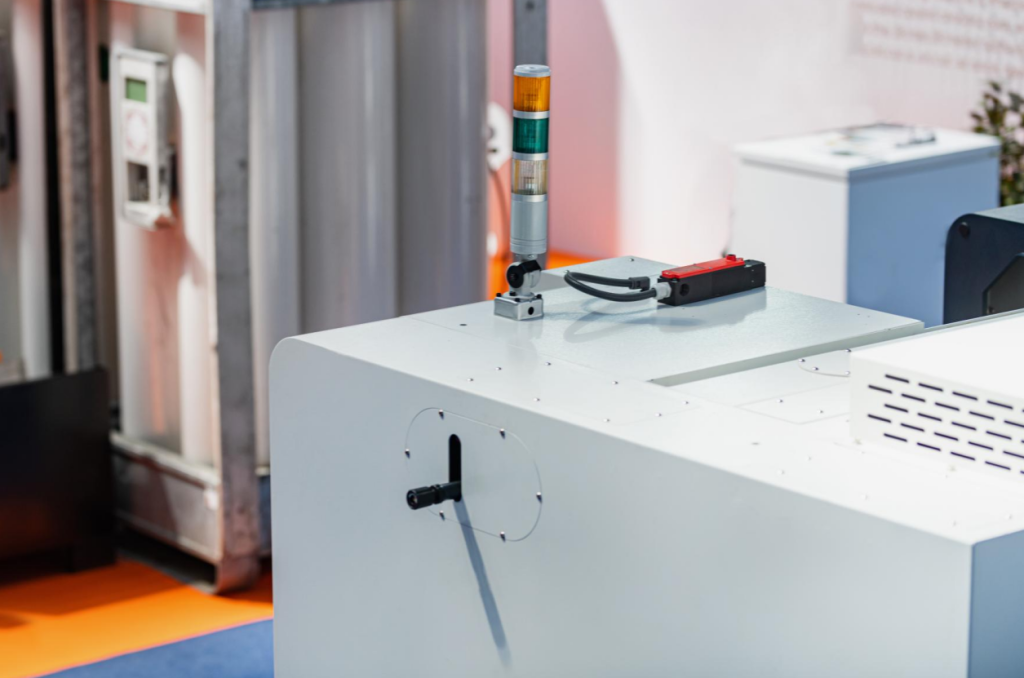
The Precision Demand of New Energy: The Natural Stage of CNC
New energy equipment has extremely stringent requirements for the performance, reliability and life of core components, and its manufacturing accuracy far exceeds that of traditional industries. CNC machining, with its unique advantages of high precision, high repeatability, and high flexibility, has become a core manufacturing method to meet these demanding requirements:
1. Photovoltaic Sector: Extreme Precision in Silicon Wafers
Silicon wafer cutting: The precision grooves on the guide wheel of multi-wire cutting machines have micron-level processing accuracy that directly affects the thickness uniformity and surface quality of silicon wafer cutting, thereby affecting the final cell efficiency. CNC technology ensures the flawless manufacturing of these critical components.
Cells and components: The cavities, electrodes, carrier plates, etc. of key equipment such as screen printing screens and PECVDs have complex geometries and extremely high surface finish requirements, which only high-performance multi-axis CNC machining centers can handle.
Tracking Bracket: The precision bearing housings and connecting components of large tracking brackets are the basis for ensuring the efficient operation of photovoltaic power plants, and CNC machining provides a stable guarantee.
2. Wind Power Sector: The Subtleties Behind Giant Power
Gearbox core: Wind power gearbox is the core of the transmission system, and its internal large gears such as planetary wheels, solar wheels, and gear rings have extremely high requirements for tooth shape accuracy, surface hardness, and microstructure. Large precision CNC turning-milling composite centers are key equipment for manufacturing these “Big Mac” precision gears.
Bearings: Spindle bearings and yaw pitch bearings are huge in size, bearing complex alternating loads, and their raceway accuracy and surface integrity requirements are extremely high.
Blade Molds: Large-scale composite wind turbine blade molding relies on high-precision, oversized molds. CNC 5-axis machining centers are capable of accurately machining complex curved surfaces of molds, ensuring the aerodynamic performance and structural strength of the blades.
3. Electric Vehicles: Precision Shaping the Power Heart
Battery packs: Aluminum alloy or steel shells, end plates, module frames, etc. of battery packs require high strength while ensuring sealing, heat dissipation, and precise dimensional fit. CNC machining centers, particularly high-speed milling, are the workhorses used to manufacture these complex structural parts.
Motor: Motor housing (especially water-cooled channel), stator core lamination mold, rotor shaft, end cap, etc., have extremely high requirements for dimensional accuracy, shape and position tolerance, and surface finish, which directly affects the efficiency, power density and NVH performance of the motor. Turning-milling compounding and precision electrical machining (such as slow wire cutting) are widely used.
Electronic control system: The processing accuracy of the heat dissipation substrate (such as water cooling plate) and shell of the power module directly affects the heat dissipation efficiency and system reliability. Precision CNC milling and special machining are indispensable.
The Evolution of CNC Technology: Empowering New Energy Manufacturing Upgrades
In order to meet the growing demand for efficient, high-quality and flexible production in the new energy industry, CNC technology itself is also constantly innovating:
1. Higher Precision and Efficiency: The application of technologies such as linear motors, electric spindles, and precision grating scales enables modern CNC machine tools to maintain micron or even sub-micron machining accuracy under high-speed operation, greatly improving production efficiency and part quality.
2. Composite machining capabilities: turning-milling composite centers and five-axis linkage machining centers have become the mainstream. One equipment can complete various processes such as turning, milling, drilling, tapping, boring, etc., reducing the number of clamping times and improving the overall machining accuracy and efficiency of complex parts (such as motor housings and special-shaped radiators).
3. Intelligence and automation: The deep integration of CNC systems with CAD/CAM/CAPP, combined with intelligent functions such as online measurement, tool monitoring, adaptive control, and automated loading and unloading (such as joint robots and AGVs), has built a flexible manufacturing unit (FMC) or flexible manufacturing system (FMS) to meet the rapid response needs of new energy products with multiple varieties and variable batches.
4. New Material Processing Capabilities: For difficult-to-machine materials such as high-strength aluminum alloys, composite materials, superalloys, and cemented carbides widely used in the field of new energy, CNC technology continuously optimizes cutting parameters, develops special tools (such as PCD, CBN tools), and applies new cooling methods (such as micro-lubrication and low-temperature cooling) to ensure efficient and high-quality processing.
Challenges and Future: The Path to Continuous Improvement
While CNC technology has made a splash in the new energy sector, challenges remain:
Super-large and ultra-precision: For example, wind turbine gears and giant blade molds, how to achieve extremely high overall and local accuracy in super-large sizes poses extreme challenges to machine tool rigidity, thermal deformation control, and processing strategies.
Efficient machining of complex structures: For example, complex stiffeners and cavities inside battery pack integrated die castings, and deep cavities and narrow grooves in motor housings require more efficient tool path planning, more stable tools, and smarter chip evacuation solutions.
Cost and efficiency balance: The new energy industry has a strong demand for cost reduction, and CNC machining needs to continuously improve efficiency and reduce the cost of a single part, such as through high-speed processing, process optimization, and reducing scrap rates.
Talent gap: High-skilled talents who are proficient in the characteristics of new energy components, complex CNC programming and technology, and advanced equipment operation and maintenance are still scarce.
Looking forward to the future, the integration of CNC machining and the new energy industry will be deeper. Digital twins, AI-driven process optimization, smarter automation integration, and hybrid applications of additive and subtractive manufacturing will further unleash the potential of CNC technology, provide more precise, more reliable, and more cost-competitive core components for new energy equipment, and continue to provide a solid manufacturing cornerstone for this great green energy revolution.
Every precise milling and precise turning is injecting higher efficiency into solar cells, forging more reliable bearings for wind turbines, and giving stronger power to the core components of electric vehicles. On the shining stage of the new energy industry, CNC machining is the indispensable behind-the-scenes hero, the perfect intersection of precision manufacturing art and green energy dreams. On the lathe, under the tip of the knife, a precision revolution on the future of energy is quietly but firmly advancing.

